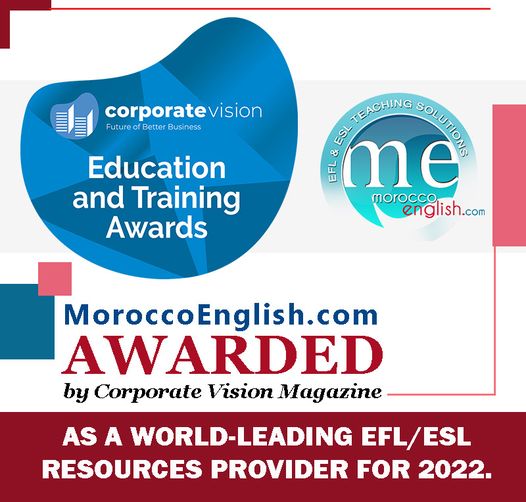
Teachers who care to connect with their students would often need to use effective questioning in the classroom to empower interaction and stabilize the relationship. However, any questioning strategy requires preparation in advance because any random and improvised questions at early stage of language learning are likely to confuse students and take such strategy off track. In fact, teachers should always have prepared questions that is related to the matter that make sense to the students in order to trigger their thinking skills. Furthermore, questions have to be thought through and assessed for their positive impact to take place in using the target language and building knowledge slowly but surely.
Indeed, simple questions with a word or a sentence that signify facts are often required in a foreign language classroom to omit any confusion and establish a strong foundation about language learning. Plus, the more questions teacher provides about the matter, the more opportunities students are given to use their thinking, improve their imagination and familiarize themselves with the target language from different standpoints. Also, it is within the question that teacher can insert new words using all kinds of tools to clarify and illustrate the message.
As teacher continues the journey with the mind teasing that has been shaking lines and shapes, students work hard naming, identifying and locating shapes using prior knowledge. After drawing shapes in different colors: a square (blue), a rectangle (red), a triangle (black), a circle (brown), a sphere (green) and cylinder(yellow) cube (orange), the teacher would make sure that students know all these shapes while reviewing and enriching the discussion with new words and improving their listening and speaking skills. For instance, teacher would invite the whole class to pay attention to the statements that he is about to utter by answering just TRUE/FALSE, YES/NO, RIGHT/WRONG.
Teacher here is targeting their listening skill. It is very important that teacher will remind students that the answer has to be given individually. Therefore, students have to ask for permission before saying a word by just raising their hands. Teacher will need to walk slowly in the classroom while saying each statement at a time. Teacher can be funny by changing his voice to loosen the atmosphere. He can even be funny changing his walk. While walking, teacher can say the same statement as many as three times to provide an opportunity to every student to hear and eventually answer. Teacher would say” ” Everybody look at the board and listen to my sentence. Then, tell me if it is TRUE or False.” (Teacher needs to mimic the word EVERYBODY (use of local gesture) and the word LOOK by pointing to his eyes with his two index fingers, then point to the board with both index fingers). This is also a great opportunity to introduce the word LISTEN by pointing to one’s ear or just by pulling downward one’s ear.softly.
Once teacher has students’ undivided attention, he will start saying :
1)The square has 3 lines. Teacher tries to stress on 3 lines. (Students Answer)
2) The rectangle has 4 angles Teacher stresses on 4 angles (Students Answer)
3) The circle has a blue color .(Students Answer)
4) The sphere is between the circle and the square.
5) The cylinder has a yellow color .
6) The cube is a 3 dimensional shape.
Teacher can challenge his students more by playing an oral guessing game where students can practice and refine listening skills like saying
-It is a shape. It is blue in color and has 4 lines/sides
Reinforcing the language, teacher would raise more simple and quick questions
What is the first letter of the word line?
How many letters does the word line have?
What is the first letter of the word shape?
How many letters does the word shape have?
It is a shape that has 3 sides and 3 angles
Reinforcing the language, teacher would raise more simple and quick questions
What is the first letter of the word side?
How many letters does the word side have?
How about the word SHAPE?
Moving to the next stage, teacher will ask students about the area of the square.
What is the area of this square ? How do we find the area of this square? What is the formula of the square area? Saying this is the area of a square, teacher tries to use his hand wide open to cover the inside of the square within the edge of the PERIMETER and says: THIS IS THE AREA . This is a good opportunity to introduce or clarify THIS and THAT…….The teacher standing close to the square and points saying THIS IS A SQUARE. and then moves few feet away and saying THAT IS A SQUARE. or turning his attention to students he would say: THIS IS A BOY……..THAT IS A BOY………THIS IS A GIRL ……THAT IS A GIRL…….THIS IS A CHAIR …….THAT IS A CHAIR by uttering these simple sentences and stressing on THIS & THAT students will understand that THIS is used to identify a specific thing close at hand and THAT is used to identify a specific thing a little farther.
Going back to the square area, teacher would need to point to the area and raise the question: “What is the formula of the square area?” Students can easily guess what the teacher is talking about and they will certainly try to utter the word “area” in the first language. At this moment, teacher will have to show appreciation to the students who grasped the idea and even provide a bonus to him or her. Teacher will write the word AREA and spell it and asks students to spell it all together as a class. A.R.E.A.. In math Area is symbolized by the letter A so AREA=A. Therefore, teacher can write on the board the formula of a square area like Sample One: AREA= Side X 4 OR Sample 2: A=SxS OR Sample 3 A=S2
Students are provided with the opportunity to find the square area by calculating mentally the results that is measured in square. For example if one side of the square measures 4 cm, asking students to calculate the area of the square using the formula (A=S2) the operation will be (4X4) and the result is 16 cm2. After praising and appreciating students for their great work , teacher will advance the lesson in teasing them more and more with the rest of the shapes through challenging them and clarifying points related to areas, measurement and names urging them to extract acquired language in the first language and convert it to the target language.
FORMULA OF A RECTANGLE AREA =Length X Width or A= LxW
FORMULA OF A TRIANGLE AREA = Length X Width INTO 2 or A= LxW/2
FORMULA OF CIRCLE AREA : 3.14 Times radius square A=πr2
The circle is the most amazing shape to me as it is rich in new words in the target language and teacher as well as students will have much fun interacting about the circle. While talking about the circle area, teacher can take this precious opportunity to enrich the discussion adding CENTER, RADIUS, DIAMETER and PERIMETER words to the new language as it is very easy to show the students the meaning of CENTER, RADIUS , DIAMETER and PERIMETER within the circle on the board. Teacher can define the word DIAMETER as a line across a circle through its center while drawing a straight line.
Teacher continues saying that the HALF of DIAMETER is called RADIUS. Teacher can use a gesture to explain the word HALF or when drawing the diameter, teacher makes sure that the circle is divided into two perfect pieces that the right half and the left half or the top half and the bottom half or the upper half and the lower half. Teacher may utter that d= 2r meaning that the diameter of a circle is two times (twice) as long as the radius. We use the Greek letter π (pronounced Pi ) to represent the ratio of the perimeter of a circle to the diameter.
For simplicity, we use = 3.14 so π(Pi) =3.14 . To calculate the area of a circle , one uses 3.14 times radius square that is A=πR2. Why 3.14? The answer is very simple. In fact, regardless of the size of the circle, π(Pi) is always the same number. So, for any circle, dividing its PERIMETER by its DIAMETER will give you the exact same number: 3.14159…or pi. Teacher can use different sizes of flat plastic plates and measure the PERIMETER & DIAMETER
At last, teacher can identify, name and describe the rest of the shapes A SPHERE ( a ball) , A CYLINDER (a jar) and A CUBE (A box) as three-dimensional shapes. Teacher has the choice to dig about them depending whether the students can handle the amount of information or not. The words HEIGHT, NEXT TO , BELOW, ABOVE, ON, UNDER, INSIDE, OUTSIDE can be added to the language in a natural way.
Rabahi Yazid M.ED.
Download The Article :







































